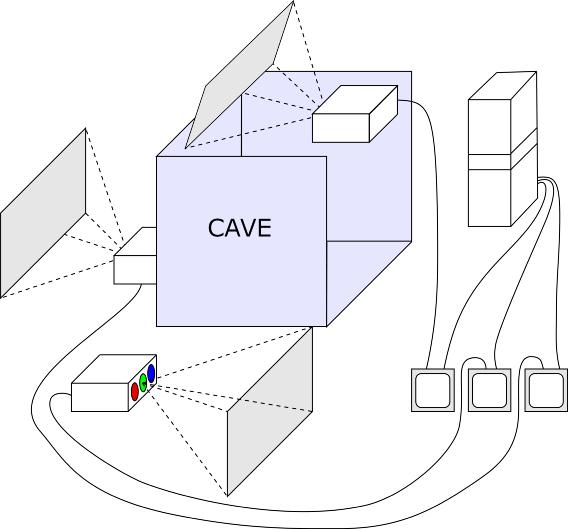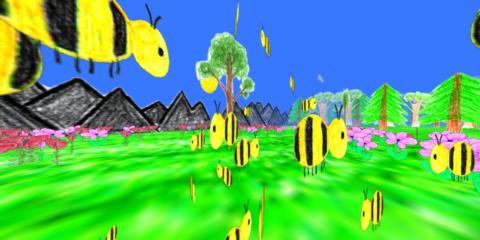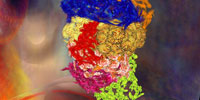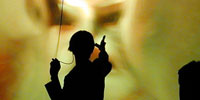 Virtual Reality in Art:
Virtual Reality in Art:
(from wikipedia: http://en.wikipedia.org/wiki/Virtual_reality)
"David Em was the first fine artist to create navigable virtual worlds in the 1970s. His early work was done on mainframes at III, JPL and Cal Tech. Jeffrey Shaw explored the potential of VR in fine arts with early works like Legible City (1989), Virtual Museum (1991), Golden Calf(1994).
Canadian artist Char Davies created immersive VR art pieces Osmose (1995) and Ephémère (1998). Maurice Benayoun's work introduced metaphorical, philosophical or political content, combining VR, network, generation and intelligent agents, in works like Is God Flat (1994), The Tunnel under the Atlantic (1995), World Skin (1997).
 Other pioneering artists working in VR have include Luc Courchesne, Rita Addison, Knowbotic Research, Rebecca Allen, Perry Hoberman, Jacki Morie, and Brenda Laurel."
Other pioneering artists working in VR have include Luc Courchesne, Rita Addison, Knowbotic Research, Rebecca Allen, Perry Hoberman, Jacki Morie, and Brenda Laurel."
CAVE: a 3d immersive virtual environment, developed by Dan Sandin and Tom DeFanti at the Electronic Visualization Lab (EVL), Chicago:
http://en.wikipedia.org/wiki/Cave_Automatic_Virtual_Environment
 some CAVEs:@ EVL: http://www.evl.uic.edu/core.php?mod=4&type=1&indi=161and http://www.evl.uic.edu/pape/CAVE/@ Ars Electronica: http://www.aec.at/en/center/current_exhibition_detail.asp?iProjectID=11197@ SAIC: http://bcchang.com/vrlab/index.php
some CAVEs:@ EVL: http://www.evl.uic.edu/core.php?mod=4&type=1&indi=161and http://www.evl.uic.edu/pape/CAVE/@ Ars Electronica: http://www.aec.at/en/center/current_exhibition_detail.asp?iProjectID=11197@ SAIC: http://bcchang.com/vrlab/index.php
some devices used in the CAVE:head mounted display:http://en.wikipedia.org/wiki/Head_mounted_displaydata glove:
http://en.wikipedia.org/wiki/Data_glovewand:tracks the user and his/her interactions with and movements in the virtual environment.
what is...
... an immersive environment:http://en.wikipedia.org/wiki/Immersive_environment... augmented reality:http://en.wikipedia.org/wiki/Augmented_reality personalities important for the development of VR:
- Myron Krueger:http://en.wikipedia.org/wiki/Myron_Krueger- Dan Sandin:http://en.wikipedia.org/wiki/Dan_Sandin- Tom Defanti:http://en.wikipedia.org/wiki/Thomas_A._DeFanti- Scott Fisher:http://en.wikipedia.org/wiki/Scott_Fisher_(technologist)- Jaron Lanier:http://en.wikipedia.org/wiki/Jaron_Lanier- Marvin Minsky:http://en.wikipedia.org/wiki/Marvin_minsky- Timothy Leary:By the mid 1980s, Leary had begun to incorporate computers, the Internet, and virtual reality into his aegis of thought. Leary established one of the earliest sites on the World Wide Web, and was often quoted describing the Internet as "the LSD of the 1990s."
[citation needed] He became a promoter of virtual reality systems,[13] and sometimes demonstrated a prototype of the Mattel Power Glove as part of his lectures (as in From Psychedelics to Cybernetics). Around this time he cultivated friendships with a number of notable people in the field, including Brenda Laurel, a pioneering researcher in virtual environments and human-computer interaction.http://en.wikipedia.org/wiki/Timothy_Leary#Leary.27s_last_two_decades
another VR-environment: the Immersa Deskhttp://www.evl.uic.edu/core.php?mod=4&type=1&indi=163some Art Projects done for the CAVE:"Crayoland", one of the first and most successful CAVE-visualizations. Created by Dave OPape in 1995, 2d-crayon drawings serve as textures for the objects in this 3d-environment.


"CAVE", a project by Austrian artist Peter Kogler in collaboration with the Ars Electronica Futurelab, was realized in 1999. As a visitor, you could navigate through Kogler's abstract shapes.


"World Skin" is an award-winning CAVE-project created by French artists Maurice Benayoun and Jean-Baptiste Barrière. What was special about it was the novel approach to the user's interaction with the envoronment. The wand served as a photocamera. When you took a photo of the scenes around you, the object was washed out, leaving a blank space.


"Gesichtsraum" by Johannes Deutsch is anouther example for a collaboration of an artist with Ars Electronica's Futurelab: Deutsch and the programmers and 3d modellers worked together closely for a period of several months to develop an immersive environment out of Johannes Deutsch's paintings of his son.


 "The works from computers nowadays covered by the term 'comoputer art' are in my opinion among the most remarkable products of our time:
"The works from computers nowadays covered by the term 'comoputer art' are in my opinion among the most remarkable products of our time:














